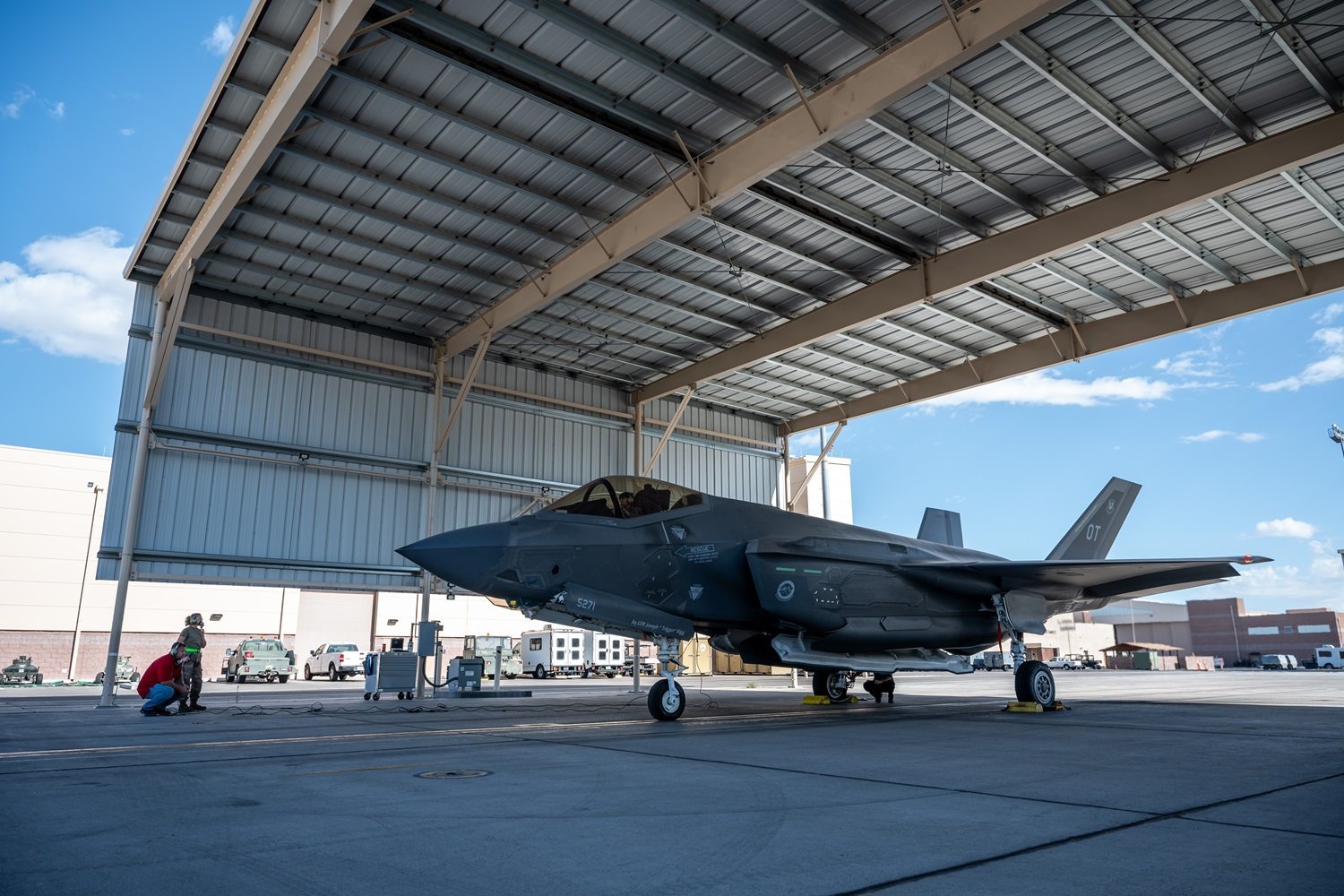Artificial Intelligence has enshittified the F-35, America’s long-embattled 5th generation stealth fighter jet. Produced by Lockheed Martin and coming in three different flavors, the F-35 relies on an AI system called the Autonomic Logistics Information System (ALIS) to maintain the aircraft. The pitch was that ALIS would keep the F-35 in flying shape cheap and easy.
The reality has been the opposite. “ALIS is the backbone of maintenance support for the F-35 aircraft. Squadrons depend on it to support day-to-day flight operations and maintenance activities … ALIS demonstrated poor usability and impeded, rather than facilitated, effective maintenance operations,” a recently revealed government report about the F-35’s many failings said.
The report comes from the Office of the Director, Operational Test and Evaluation, a Reagan-era Pentagon department that tests American weapons systems. It’s highly classified but the Project On Government Oversight, a non-profit watchdog group that investigates government spending, shook it loose with a Freedom of Information Act Request. The 382-page report is an in-depth indictment of the F-35 from the DoD itself. Greg Williams over at POGO has gone through the report in-depth and pulled out the most scandalous and ridiculous bits.
Lockheed Martin pitched the AI system ALIS in a YouTube video seven years ago. It compared the system to a cell phone. The idea was that a central server would serve as an information and maintenance hub about the jets. The F-35 has a lot of sensors on it and ALIS would handle the data and tell the maintenance crew what to do with it.
“The F-35 provides more maintenance data from its sensors than any other fighter and ALIS converts that into actionable information to keep F-35s mission ready,” the video said. “ALIS brings the training, planning, maintenance, and support functions together in one system, saving time and money while increasing aircraft availability.”
This is an AI system that runs on a server that requires a room the “size of a shipping container” to function. It hasn’t gone well. According to the DOTE report, ALIS keeps telling support staff that things are wrong with individual F-35s when everything is fine. “Efforts to tackle the high false alarm rates have so far not yielded major progress towards meeting threshold requirements,” the report said.
The DoD has been attempting to use software filters to screen ALIS’s nonsense, but it doesn’t always work. And every time there’s a new piece of hardware or a software update, everything breaks again. “While it has been refining these filters ever since, a large number of false alarms still results in non-actionable maintenance work orders,” the report said. “One cause of high false alarm rates is that new aircraft software loads, or new versions of hardware, tend to produce new false alarms, and the PHM filters lag the pace of system updates.”
“ALIS had poor usability, required large amounts of maintainer time to complete application tasks, experienced frequent disruptions, did not provide maintainers all desired information and capabilities, and did not present consistent information to maintainers,” the report said. The problems with ALIS were so bad that F-35 maintenance people started to distrust it and developed their own unique workarounds when dealing with the AI system.
The problems with ALIS and the F-35 in general have been public for a long time. Four years ago the Government Accountability Office called out ALIS for being a buggy nightmare that maintenance crews hated using and didn’t trust. In response, Lockheed is replacing ALIS with a system called the Operational Data Integrated Network (ODIN). But ODIN hasn’t been tested yet and is, at first, just about migrating existing ALIS systems into the cloud.
The F-35 has sucked for a long time. It’s got so many issues that it took the Pentagon 382 pages to elaborate on all of them. ALIS is just one of them. The Marines lost an F-35 in South Carolina last year. In 2021, one of the jets shot itself and caused $2.5 million in damage. Despite these and myriad other issues and crashes, the Pentagon is set to spend trillions on this thing and make millions more selling them to its allies.















Leave a Reply